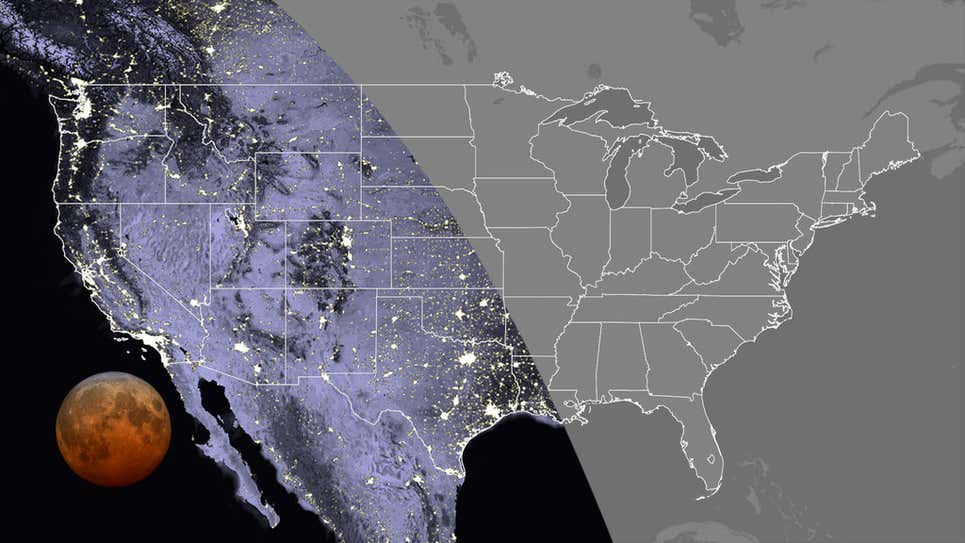On Wednesday, May 26, the Moon will move
into Earth’s shadow, resulting in the first total lunar eclipse in
nearly two and a half years. Here’s how to see it, regardless of where you live in the world.
The first total lunar eclipse since January 21, 2019 should be a good one, as the Moon will appear bigger and brighter than usual. The eclipse is “super” because the Moon will pass near to its orbital perigee—its closest point to Earth—making it appear large and bright in the sky (the Moon will appear about 7% larger than normal).
As for the “blood” part of the equation, our large natural satellite should be cast in a distinctly reddish glow, a result of the Sun’s rays being filtered through Earth’s atmosphere; lunar eclipses happen when the Moon passes through Earth’s shadow, but some sunlight manages to reach the lunar surface.
“The eclipsed Moon is dimly illuminated by red-orange light left over from all of the sunsets and sunrises occurring around the world at that time,” according to NASA. “The more dust or clouds in Earth’s atmosphere during the eclipse, the redder the Moon will appear.”
The celestial event is also being referred to as the Super Blood Flower Moon, with the Flower part a reference to a traditional term for the May full Moon.
As NASA explains, the eclipse will be visible to observers around the world, provided the sky is clear. That said, some regions will be limited to partial views of the eclipse. Diana Hannikainen, observing editor at Sky & Telescope, says you “only need your eyes to see the drama unfold, but if you have binoculars or a backyard telescope, they’ll give a much-enhanced view.” Unlike with a solar eclipse, no eye protection is needed to view a lunar eclipse.
Areas
in which a total lunar eclipse will be visible include the western
continental U.S and western Canada, Mexico, much of Central America, and
parts of Peru, Chile, and Argentina. For these regions, the total
eclipse will be visible prior to the Moon setting on the western
horizon, just before sunrise. Observers along the Asian Pacific Rim will see the total eclipse right after the Moon rises in the east.
The eclipse, in both total and partial form, will be visible to observers in eastern Australia, New Zealand, the Pacific Islands, and Hawaii shortly after moonrise.
Areas in which a partial eclipse can be seen include the eastern U.S. and eastern Canada. Observers can catch this view just prior to the Moon setting in the morning. Observers in eastern Russia, India, Nepal, western China, and Mongolia can catch the partial eclipse after the Moon rises in the evening sky.
The total lunar eclipse—when the Moon is in its deepest shadow—will only last for about 15 minutes, so it’s important to plan ahead and know the exact time for your particular observing area. The chart above will help, with the row “Total begins” signifying the start time of the lunar eclipse sequence. So for people in PDT (Pacific Daylight Time), the eclipse is set to start at 4:11 a.m. local time on the morning of May 26. For people along the eastern coast of the U.S. and Canada, a partial eclipse will be visible between 4:48 a.m. and 5:16 a.m. EDT (Eastern Daylight Time).
If you’re in Europe or Africa, or simply don’t intend to be awake in the wee hours of the morning, you’ve still got options. Live webcasts of the eclipse are being made available, weather permitting, courtesy of Griffith University (starting at 4:45 a.m. EDT, 1:45 a.m. PDT), Lowell Observatory (5:30 a.m. EDT, 2:30 a.m. PDT), and the Virtual Telescope Project (6:00 a.m. EDT, 3:00 a.m. PDT).

